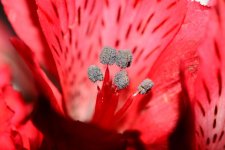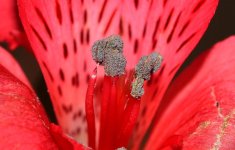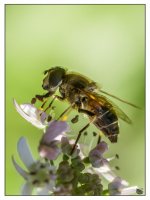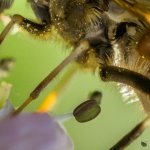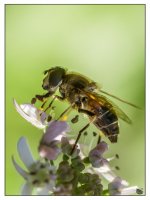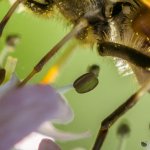It's shot against the light which makes it look strange. Believe me, when zooming in, it's far from impressive.

For DoF I use a quick and rough formula.
At 1:1 your DoF at f/n is always a fixed size. That never changes for your cam even if you would add a longer macro lens. If you find the sharpest aperture on your lens, you only have to find out the DoF for that aperture at 1x.
Then it was something like: (f/n)/4 = DoF*4 = 1x/2 (0.5x)
For every four stops you close down, you increase that DoF by 200% which can also be gained by halving your magnification. Every two stops would roughly lead to a doubling which equals using one quarter less magnification.
Distances are hard in macro but it's fairly easy to guess the size of a bug. You also know your sensor size so while looking through the viewfinder, you can quickly estimate the magnification you are at and use that to adjust to the DoF you prefer.
My formula is a rough estimate but it's easy to remember once you have your starting number. For exact numbers, you'll have to check them for your cam. I need to recheck mine for this cam too.

